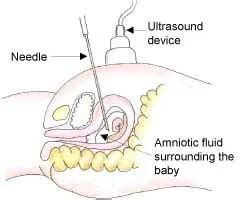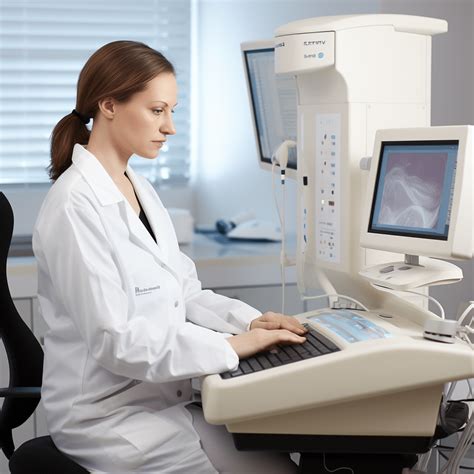Intro
Discover what amniocentesis is, a prenatal test for genetic disorders, involving fluid sampling, genetic analysis, and fetal health assessment, helping expectant mothers understand risks and make informed decisions about their pregnancy and babys health.
Amniocentesis is a prenatal test that has been a cornerstone in the field of obstetrics for decades, providing valuable insights into the health and development of a fetus. This procedure involves the withdrawal of a small sample of amniotic fluid from the amniotic sac surrounding the fetus, which is then analyzed for various genetic and chromosomal abnormalities. The importance of amniocentesis lies in its ability to detect potential issues early on, allowing parents and healthcare providers to make informed decisions about the pregnancy. As medical technology continues to evolve, the role of amniocentesis in prenatal care remains vital, offering a window into the genetic makeup of the fetus and guiding the management of the pregnancy.
The significance of amniocentesis extends beyond its diagnostic capabilities, as it also reflects the advancements in genetic testing and prenatal medicine. With the increasing awareness of genetic disorders and the desire for healthy offspring, more couples are opting for amniocentesis as a means of assessing fetal health. This test is particularly recommended for women over the age of 35, as the risk of chromosomal abnormalities increases with maternal age. Moreover, amniocentesis can provide reassurance for expectant parents who have a family history of genetic disorders or have had previous pregnancies affected by such conditions.
As the field of genetics continues to expand, the applications of amniocentesis are becoming more diverse. Not only can it detect chromosomal abnormalities such as Down syndrome, but it can also identify genetic mutations that may lead to conditions like cystic fibrosis or sickle cell anemia. The procedure itself is relatively straightforward, involving the insertion of a needle into the amniotic sac under ultrasound guidance to collect the amniotic fluid sample. Although it carries a small risk of complications, such as miscarriage or infection, the benefits of amniocentesis in terms of prenatal diagnosis and planning far outweigh these risks for many expectant parents.
Understanding the Procedure

The amniocentesis procedure is typically performed between the 15th and 20th weeks of pregnancy, although it can be done later in certain circumstances. The process begins with an ultrasound to determine the position of the fetus and the location of the placenta, ensuring that the needle can be safely inserted into the amniotic sac. Once the optimal site is identified, the skin is cleaned and a local anesthetic may be administered to minimize discomfort. Under continuous ultrasound guidance, a thin needle is then inserted through the abdomen and into the amniotic sac, and a sample of amniotic fluid is withdrawn.
Preparation and Aftercare
The preparation for amniocentesis involves a series of steps to ensure the procedure is carried out smoothly and safely. Expectant mothers are usually advised to drink plenty of water before the test to ensure their bladder is full, which helps in obtaining clearer ultrasound images. It is also recommended to avoid consuming heavy meals or engaging in strenuous activities on the day of the procedure. After the test, patients may experience mild cramping or spotting, but these symptoms are temporary and should resolve on their own. Rest and avoiding strenuous activities for the remainder of the day are often recommended to minimize the risk of complications.Benefits and Risks

The benefits of amniocentesis are multifaceted, offering a detailed genetic profile of the fetus. This information can be crucial for parents who are at a higher risk of having a child with genetic abnormalities. By identifying potential issues early, families can prepare themselves emotionally and financially for the challenges that lie ahead. Moreover, in cases where severe abnormalities are detected, amniocentesis provides the option for parents to consider termination of the pregnancy, a decision that is deeply personal and influenced by various factors including ethical, religious, and personal beliefs.
However, like any medical procedure, amniocentesis carries its own set of risks. The primary concern is the risk of miscarriage, which is estimated to occur in about 1 in 300 to 1 in 500 procedures. Other potential complications include infection, leakage of amniotic fluid, and injury to the fetus or placenta. Although these risks are relatively low, they underscore the importance of discussing the procedure thoroughly with a healthcare provider to weigh the benefits against the potential risks.
Interpreting Test Results
The results of amniocentesis can provide a wealth of information about the genetic health of the fetus. The amniotic fluid contains cells shed by the fetus, which can be cultured and analyzed for chromosomal abnormalities. The test can detect conditions such as Down syndrome, Edwards syndrome, and Patau syndrome, among others. Additionally, amniocentesis can identify the sex of the fetus and detect certain genetic disorders that are inherited in an autosomal recessive or X-linked pattern.Alternatives to Amniocentesis

For expectant mothers who are hesitant about undergoing amniocentesis due to its invasive nature and associated risks, there are non-invasive alternatives that have been developed. One such alternative is the non-invasive prenatal test (NIPT), which analyzes the cell-free DNA present in the mother's blood to screen for common chromosomal abnormalities. Although NIPT is not diagnostic and requires follow-up testing for confirmation, it offers a risk-free screening option for many women.
Another alternative is chorionic villus sampling (CVS), which involves taking a sample of cells from the placenta. CVS can be performed earlier in pregnancy than amniocentesis, typically between weeks 10 and 12, and provides similar information about chromosomal abnormalities. However, CVS also carries its own set of risks, including miscarriage and limb abnormalities in the fetus, albeit rare.
Deciding on Amniocentesis
The decision to undergo amniocentesis is a personal one, influenced by a variety of factors including the woman's age, family history of genetic disorders, and previous pregnancy outcomes. For many couples, the desire for a healthy child and the need for advanced prenatal care make amniocentesis an invaluable tool. It is essential for expectant parents to discuss their options thoroughly with a healthcare provider, considering both the benefits and the risks, to make an informed decision that aligns with their personal values and circumstances.Advancements in Prenatal Testing

The field of prenatal testing is rapidly evolving, with new technologies and techniques being developed to improve the detection of genetic abnormalities. Microarray analysis, for example, allows for a more detailed examination of the fetal genome, identifying subtle genetic changes that may not be visible through traditional karyotyping. Furthermore, the integration of artificial intelligence and machine learning algorithms into prenatal testing is enhancing the accuracy of screenings and diagnostics.
Future Directions
As genetic science continues to advance, the future of amniocentesis and prenatal testing holds much promise. The development of more sophisticated non-invasive tests, capable of detecting a wider range of genetic conditions with high accuracy, is on the horizon. Additionally, the use of gene editing technologies, such as CRISPR, may one day offer the possibility of correcting genetic abnormalities in utero, revolutionizing the management of inherited diseases.Conclusion and Next Steps

In conclusion, amniocentesis remains a vital tool in prenatal care, offering a unique window into the genetic health of the fetus. While it is associated with certain risks, the benefits of early diagnosis and planning cannot be overstated. As medical technology continues to evolve, it is likely that amniocentesis will play an even more critical role in the management of pregnancies, especially for those at higher risk of genetic abnormalities.
We invite you to share your thoughts and experiences with amniocentesis and prenatal testing in the comments below. If you found this article informative, please consider sharing it with others who may benefit from this information. For those seeking more detailed information or personal advice, we recommend consulting with a healthcare provider who can offer guidance tailored to individual circumstances.
What is the primary purpose of amniocentesis?
+Amniocentesis is primarily used to detect genetic and chromosomal abnormalities in the fetus, providing valuable information for prenatal care and decision-making.
At what stage of pregnancy is amniocentesis typically performed?
+Amniocentesis is usually performed between the 15th and 20th weeks of pregnancy, although it can be done later in certain circumstances.
What are the risks associated with amniocentesis?
+The primary risks of amniocentesis include miscarriage, infection, leakage of amniotic fluid, and injury to the fetus or placenta, although these risks are relatively low.
